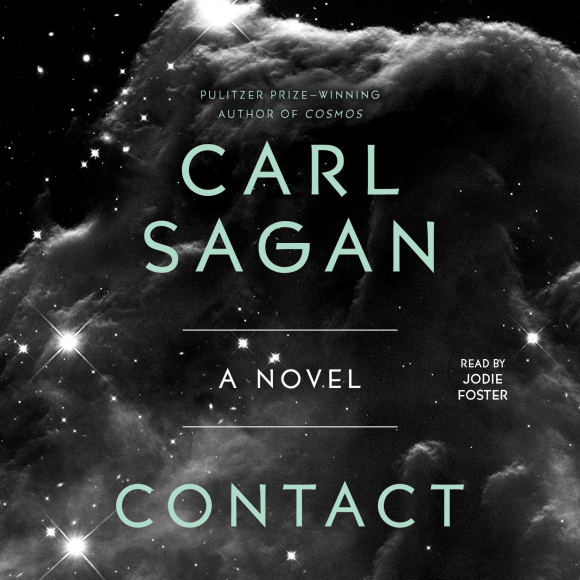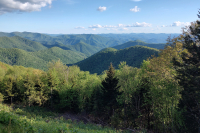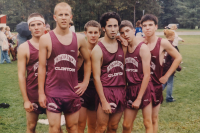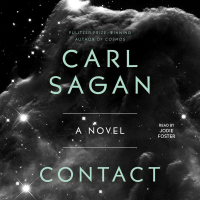A look into the future from 40 years ago

These days on the internet news there is a plethora of information about sightings and filming of UFOs. With that in mind, I went back to the scientific source of much of that exploration and information — to the work of Carl Sagan (1934-1996) and the SETI organization with which he worked.
Sagan was one of most heralded and highly regarded minds of the 20th century and an award-winning astrophysicist, a professor of astronomy at Cornell University — where he directed the Laboratory for Planetary Studies — and author of many books such as “Pale Blue Dot” and “The Search for Extra-Terrestrial Intelligence (SETI)”. It turns out, he has also written a novel (“Contact,” Simon & Schuster, 1985, 430 pages) imagining what it might be like if we, here on Earth, were to receive some kind of encrypted cosmic message from beings from another world. As someone who was more than familiar with the SETI project and what was being done by us humans to reach out into space and make contact with beings from other planets within our galaxy and beyond, Sagan may have been the best person to imagine such a scenario and to write such a technically detailed fictional account.
Right from the start in “Contact,” in the first chapter that features an epigram by William Blake, Sagan — the man who helped to popularize science — takes us right into the thick of things with the abstract binary message that is detected by a SETI-like organization Sagan calls Project Argus. And the rush begins to try and decipher the message by any number of organizations and nations. But this story is not only about contact between humans and extraterrestrials, it is about contact and conflict down on Earth, with each other. At the center of all this is the main character of Eleanor (Ellie) Arroway, who is head of Project Argus and is instrumental in the process of decoding the message from the planet Vegas. Very early on in this process she realizes that “chapter one of human history is over.”
What we have next is the juxtaposition of government vs. science vs. religion and their different paranoid positions on the situation now at hand, which soon escalates into nation vs. nation maneuvering to try and control things to their own advantage. Here, Ellie takes on the mantle of trying to persuade the world leaders not to treat the message or possible contact as a threat. After several years of back and forth between organizations and nations, the alien message is finally decoded and appears to be instructions for building some kind of machine.
With blueprint in hand, the bickering begins all over again with the idea of profit on everyone’s minds, since building this “machine” will cost trillions and take time. And so, the expensive and lengthy race to build The Machine is on. After much time and occasional attempts at sabotage, The Machine is constructed and five passengers are selected, including Ellie Arroway, from a worldwide population of likely candidates.
Not knowing until the moment of activation what The Machine can and will do, the five passengers inside find themselves traveling at excessive speed inside some kind of tunnel that they later interpret as being what astrophysicists calls a “wormhole.” Before they know it, The Machine has come to rest in sunlight, blue sky and a sandy beach. “So, they had voyaged 30,000 light years to walk on a beach? Could be worse, she thought.”
After some time and speculation, the five astronauts venture out of their capsule into the new world, all headed in different directions. Eventually, Ellie meets a human type being that looks almost exactly like her deceased and much-loved father. The Vegas being identifies himself as part of a group of intergalactic beings that are referred to as The Caretakers, or more professionally as the Office of the Galactic Census, and a conversation ensues: “I think it’s amazing that you’ve done as well as you have. You’ve got hardly any theory of social organization, astonishingly backward economic system, no grasp of the machinery of historical prediction, and very little knowledge about yourselves. Considering how fast your world is changing, it’s amazing you’ve not blown yourselves to bits by now. That’s why we don’t want to write you off just yet. You humans have a certain talent for adaptability — at least in the short term,” the Vegan spoke.
It turns out that each of the five time-travelers have had similar experiences with friends and family from their past and all given similar messages from The Caretakers, “who were enormously knowledgeable and powerful, who were concerned for their survival, beings with a set of expectations about how they should behave; beings who would ‘watch us more closely now.’ No more dropping in for a casual look-see every few million years.”
Back, again, at The Machine base in Hokkaido, Japan, Ellie and the others reflect upon their adventure: “We had been given a glimpse, she thought, and then were left to save ourselves. If we could. ‘Home’, she thought. Home. This my world. This where I come from. Everyone I know, everyone I ever heard of, grew up down here, under that relentless and exquisite blue.”
And, finally, Sagan leaves us with a message from the female President of the United States: “Your journey has given us all an increasing mutual understanding within the human community, the sense that we are all fellow passengers on a perilous journey in space and in time with the goal of a global unity of purpose that is now known all over the planet.” Now, almost 40 years after Sagan’s “Contact” was published, these words seem more prophetically pertinent than ever.
(Thomas Crowe is a regular contributor to The Smoky Mountain News and author of the multi-award-winning non-fiction nature memoir “Zoro’s Field: My Life in the Appalachian Woods.”)













